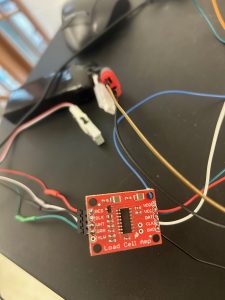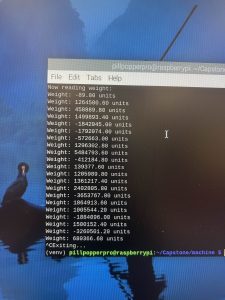The most significant risk that could jeopardize the project is the load cell amplifier. Since there is so much noise, we are currently unable to get any good reading (as shown in the picture below). From the research we’ve done, its likely due to the fact that HX711 load cell amplifiers work best for load cells that measure higher weights and that soldering can add to noise since we need a specific type of wire. However, we had to solder the wires because the load cells wires were so fragile, they kept on breaking. Aneesha and MM are looking into other solutions to explore such as force sensors. We decided to replace the battery pack with another buck booster converter to achieve better accuracy on the voltage that we need for a good reading. Additionally, we ordered another pack of SD cards, since we do not have any spares left. Both of these cost less than $40, keeping us under budget. The team will work on testing (accuracy of pills being dispensed, website re-sizing to devices, mobility needed to operate device, etc) as listed in the design report section 7. More specifically, we will pull up the website on a variety of screen sizes and go through the motions of the website to make sure everything is rendering appropriately. We will conduct about 60 dispense trials across a variety of pill sizes and record the accuracy of the dispensing.


